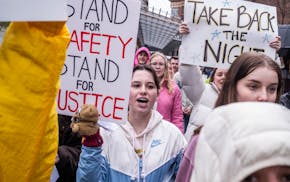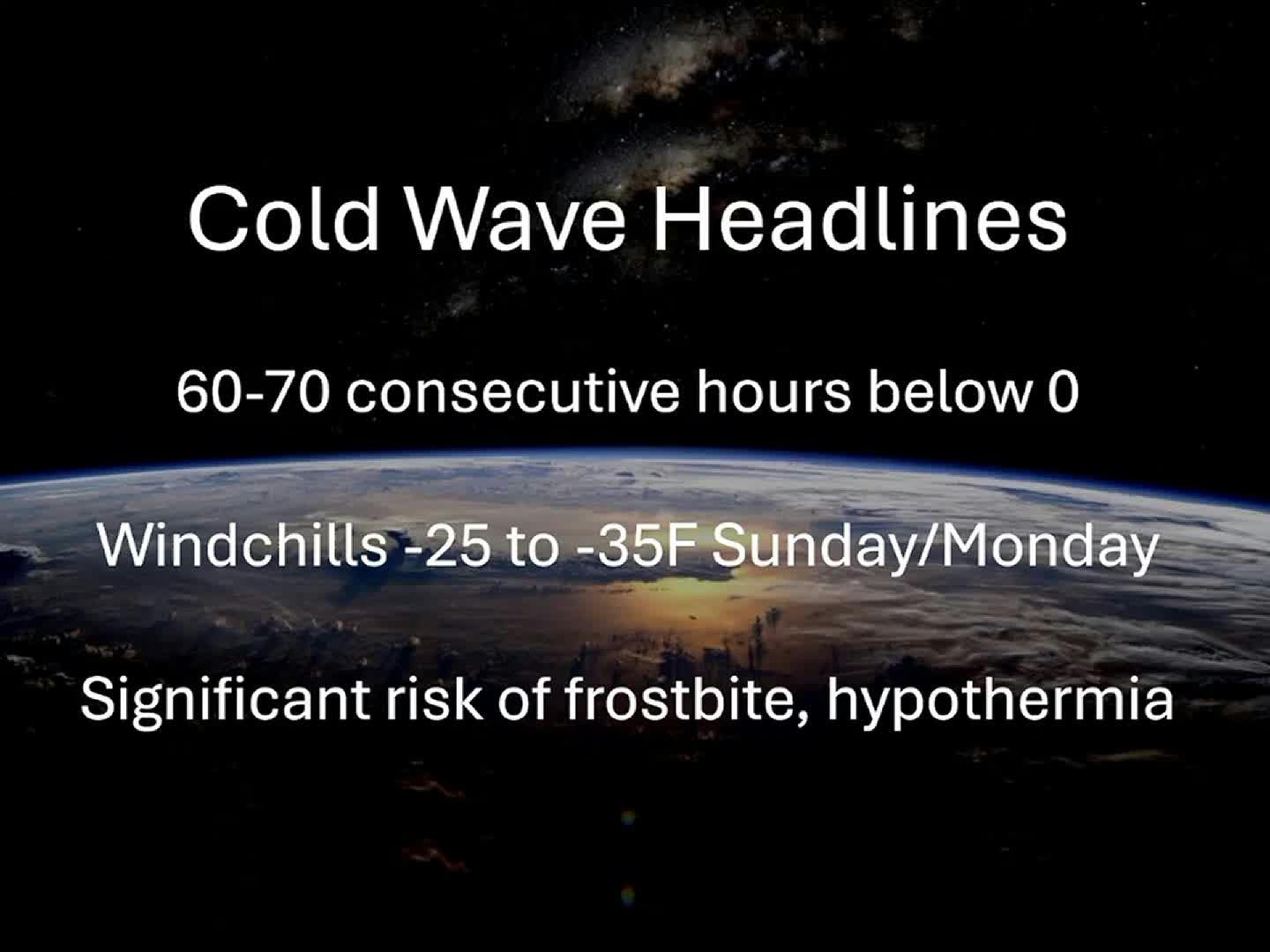Bundle up, Minnesota. The longest cold snap in nearly six years is on the way, and the mercury might not rise above zero from Saturday night until Tuesday afternoon.
An arctic air mass that originated in Siberia will send temperatures tumbling from the balmy 30s Friday morning to well below zero for the weekend, and bring 30- to 50-degree-below-zero windchills across the state and much of the country, the National Weather Service's Weather Prediction Center said.
"This poses a heightened risk of hypothermia and frostbite to exposed skin," the Weather Service said. "Have a cold weather survival kit if traveling."
After a high of 7 degrees above zero Saturday, the Twin Cities will see more than 60 hours of subzero temperatures. That includes two consecutive days of highs with minus signs in front of them on Sunday and Monday, with highs of 2 and 6 degrees below zero, respectively, the National Weather Service said. Should that play out, it will mark the first time the mercury has failed to reach above zero during the day since 2019, according to the Minnesota State Climatology Office.
Windchill readings will fall to near minus 30 degrees for Sunday and Monday in the Twin Cities and in the minus 40s in northern Minnesota, the Weather Service said.
Plenty cold, for sure, but "we are honestly used to colder in January," said Tyler Hasenstein, a meteorologist with the National Weather Service in Chanhassen.
Last year there were five January nights with below-zero readings. In 2020 and 2021, there were none, Climatology Office records show.
The Twin Cities area has not seen a prolonged cold snap in six years. In 2019, there were 10 nights when temperatures sank below zero, including eight straight from Jan. 24 to 31. That same year, the official thermometer at Minneapolis-St. Paul International Airport registered subzero highs for three consecutive days at the end of the month, with the coldest high of minus 13 on Jan. 30, weather records show.
How to stay safe in the cold
When temperatures go that low, anybody going outside should dress in layers and keep their head covered, the Weather Service said.
Motorists should pack a safety kit that includes a blanket, cellphone and charger, water, flashlight with extra batteries, jumper cables and warning devices such as road flares, AAA said.
Motorists also should check their tire pressure before heading out. Cold air reduces tire pressure by about 1 or 2 pounds per square inch for every 10 degrees the temperature drops. Underinflated tires can impact steering and traction, the automobile group said.
For drivers who encounter trouble, "our fleet will be all hands on deck in the coming days," said Brynna Knapp with AAA Minnesota.
The saving grace is that the metro and southern Minnesota don't have much of a snowpack, which keeps the temperatures from going even lower and prevents the arctic chill from staying around long term. By Tuesday, temperatures will rise into the single digits above zero and get close to average by Wednesday, with a high near 20.
As winter reaches its halfway point, this might be the coldest air mass of the season. The Climate Prediction Center is forecasting temperatures about normal for the rest of the month.
"Unless there is some significant weather system, we are not going to see deep penetrating cold for the rest of winter," Hasenstein said.

State Patrol: Ex-Viking Adrian Peterson arrested in Twin Cities for driving drunk with four passengers in his car
FBI arrests a Milwaukee judge accused of helping a man evade immigration authorities

U holds 'Take Back the Night' rally as part of Sexual Assault Awareness Month

Trump administration reverses course, will reinstate international student visas


